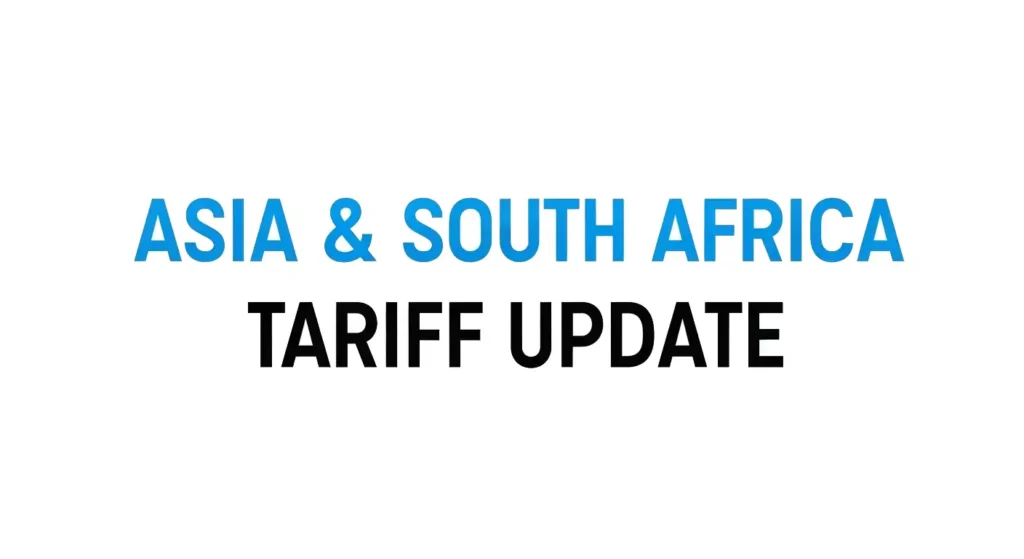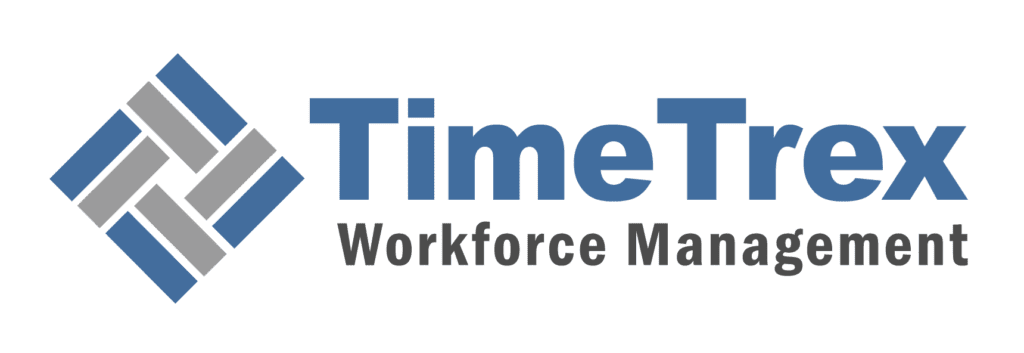
New August 1st, 2025 Tariffs
For U.S. businesses, the global trade landscape has been irrevocably altered. In a series of dramatic policy shifts throughout 2025, the U.S. administration has culminated its efforts in a new regime of punitive tariffs set to take effect on August 1, 2025. This urgent analysis provides a strategic overview for business leaders, importers, and supply chain managers on the tariffs targeting six key nations: South Korea (25%), Japan (25%), Malaysia (25%), South Africa (30%), Laos (40%), and Myanmar (40%). Navigating this new reality requires a deep understanding of not just the numbers, but the complex motivations behind them.
In This Article
- The 2025 U.S. Reciprocal Tariff Framework
- South Korea's High-Stakes Balancing Act: Alliance vs. Economic Sovereignty
- Japan's 'Investment Shield': A Resilient Economy's Response
- Malaysia's Geopolitical Tightrope: Navigating BRICS and a Semiconductor Exemption
- South Africa's Bold Gambit: Defending AGOA and the Automotive Sector
- Laos and the Data Dispute: A Disproportionate Burden
- Myanmar's Humanitarian Crisis: When Tariffs Become Sanctions
- Comparative Analysis and Sectoral Impact
- Global Economic and Geopolitical Ramifications
- Strategic Outlook and Recommendations for US Businesses
The administration's stated rationale centers on rectifying trade deficits, framed as a threat to economic and national security. However, this policy also intertwines geopolitical goals—like threatening a 10% surcharge for countries aligning with the BRICS bloc—and a domestic agenda focused on reshoring manufacturing. For U.S. businesses, understanding this multi-layered strategy is the first step toward building resilience and navigating the significant challenges ahead.
The 2025 U.S. Reciprocal Tariff Framework
The 2025 U.S. tariff policy is a major departure from decades of trade strategy, marked by its unilateral implementation, unconventional communication, and contentious legal footing. Understanding its architecture is essential for any business with international exposure.
From "Liberation Day" to the August 1 Deadline
The policy unfolded through a deliberate pattern of manufactured crisis and coercive negotiation. On April 2, 2025, dubbed "Liberation Day," the administration announced a sweeping "reciprocal tariff" regime. After market backlash, a 90-day "pause" with a universal 10% baseline tariff was implemented to allow for negotiations, under the ambitious goal of "90 deals in 90 days." With few substantive deals reached, on July 7, the administration began unilaterally announcing finalized, country-specific rates via social media posts, setting a final, unmovable implementation date of August 1, 2025.
Mechanism and Legality: IEEPA and the "Uncertainty Tax"
The administration has invoked the International Emergency Economic Powers Act (IEEPA) of 1977, a law granting broad authority to regulate economic transactions in a national emergency. By declaring the trade deficit a "national emergency," the President has bypassed the need for Congressional approval, a move that is legally contentious and subject to numerous court challenges. Furthermore, the use of social media for major policy announcements has injected extreme volatility into global markets. Analysts at the Center for Strategic and International Studies (CSIS) note that this policy unpredictability itself acts as a tax on the economy, as businesses delay investment and consumers postpone spending in the face of an unstable environment. The constant threat that tariffs "may be modified, upward or downward, depending on our relationship" institutionalizes this uncertainty as a core feature of the trade landscape.
| Country | 2024 U.S. Trade Deficit (Goods) | Initial Rate (April 2) | Final Tariff Rate (Aug 1) | Change | BRICS Status |
|---|---|---|---|---|---|
| South Korea | $66.0 billion | 25% | 25% | No Change | N/A |
| Japan | $69.4 billion | 24% | 25% | +1 ppt | N/A |
| Malaysia | $24.9 billion | 24% | 25% | +1 ppt | Invited to join |
| South Africa | $8.9 billion | 30% | 30% | No Change | Member |
| Laos | $763 million | 48% | 40% | -8 ppt | N/A |
| Myanmar | $577 million | 44% | 40% | -4 ppt | N/A |
South Korea's High-Stakes Balancing Act: Alliance vs. Economic Sovereignty
A 25% tariff on South Korean goods is layered on top of existing sectoral duties, including a punitive 50% tariff on steel and aluminum and a 25% tariff on automobiles. This multi-layered assault targets key pillars of the South Korean economy. For U.S. businesses, this means significant price hikes on goods from iconic brands like Hyundai and Kia, as well as a vast array of consumer electronics from Samsung and LG, from televisions to home appliances. The tariffs also hit industrial supply chains, impacting U.S. imports of South Korean chemicals that are fundamental to American manufacturing.
This creates a significant policy paradox. The tariffs risk chilling major South Korean investment in strategic U.S. sectors, such as the advanced semiconductor and battery plants being built by these very same companies. These investments are vital to stated U.S. goals of building resilient domestic supply chains. In effect, the U.S. is punishing a key ally for a trade deficit while simultaneously discouraging the very investments that would strengthen the U.S. economy and its national security.
Japan's 'Investment Shield': A Resilient Economy's Response
Like South Korea, Japan faces a 25% general tariff on top of existing duties on autos (25%) and steel (50%). The impact on core industries like automotive and electronics has been immediate. However, Japan's response has been carefully calibrated, employing an "investment as a shield" strategy. In all negotiations, Japanese officials have consistently shifted the focus away from the simple goods trade deficit and toward Japan's role as the single largest foreign investor in the United States—a status that supports hundreds of thousands of American jobs. This narrative directly counters the U.S. justification by highlighting the deep, mutual benefits of the economic relationship.
While maintaining a firm public stance, Tokyo is reportedly considering targeted concessions to provide the U.S. administration with a political "win." Recognizing the President's focus on agriculture, Japanese negotiators may increase import quotas for U.S. rice, soybeans, and corn. This is a calculated move to trade relatively minor agricultural concessions for relief from the far more damaging tariffs on its core industrial exports.
Malaysia's Geopolitical Tightrope: Navigating BRICS and a Semiconductor Exemption
Malaysia faces a 25% tariff and the unique geopolitical threat of a 10% BRICS-related surcharge. Critically, its vital electronics and semiconductor sector—a key node in global tech supply chains for assembly, packaging, and testing—is currently exempt. However, the U.S. has explicitly stated this sector remains "under review," creating powerful leverage and profound uncertainty for one of the world's most important tech hubs.
This situation creates complex trade diversion dynamics. On one hand, Malaysia could gain market share from China as U.S. firms seek alternative sourcing locations (positive diversion). On the other, it is at risk of losing business to competitors with lower tariff rates, such as Mexico or the Philippines (negative diversion). Malaysia's strategy has been to compartmentalize: publicly asserting its foreign policy independence while aggressively negotiating a trade deal to preserve the critical semiconductor exemption, which remains the central, unspoken bargaining chip in all discussions.
South Africa's Bold Gambit: Defending AGOA and the Automotive Sector
As a prominent BRICS member, South Africa has been hit with a punitive 30% tariff, with a separate 25% sectoral tariff on vehicles and car parts. This action effectively nullifies the benefits of the African Growth and Opportunity Act (AGOA), a cornerstone of U.S.-Africa trade for over two decades. The automotive sector, which accounts for over half of South Africa's trade surplus with the U.S., is existentially threatened.
In response, Pretoria has adopted a uniquely proactive strategy. It has formally submitted a detailed concession package, offering a ready-made deal to the U.S. This proposal includes duty-free quotas for 40,000 vehicles and millions of kilograms of steel and aluminum, a commitment to import over $12 billion in U.S. liquefied natural gas (LNG), and a proposal for a joint mineral exploration fund. In parallel, the government is accelerating a strategic diversification plan, leveraging the African Continental Free Trade Area (AfCFTA) to reduce its long-term dependence on the U.S. market.
Laos and the Data Dispute: A Disproportionate Burden
Laos faces one of the highest rates at 40%, a punitive measure based on U.S. trade deficit data that the Lao government vehemently disputes. According to its own statistics, Laos ran a surplus with the U.S., not a deficit. This fundamental disagreement over the facts has led many to believe the tariff is based on unstated factors. While U.S. trade is a small part of its overall economy, the indirect effects of a global slowdown triggered by the tariffs are projected to be "enormous," depressing demand from its key regional partners and reducing the foreign investment critical to its development.
Myanmar's Humanitarian Crisis: When Tariffs Become Sanctions
For Myanmar, the 40% tariff is less a trade tool and more an additional layer of economic sanction on a country already in a deep political and humanitarian crisis following the 2021 military coup. The tariff has had a singular, devastating effect: the collapse of the nation's garment industry. This sector was one of the few remaining sources of formal employment, especially for women. The tariff's indiscriminate nature means it inflicts the most severe economic pain on ordinary workers and civilian-run industries, exacerbating poverty and instability in a conflict-ridden state. With no unified government to negotiate, the only response has been desperate humanitarian appeals from industry associations.
Comparative Analysis and Sectoral Impact
Across the targeted nations, a fascinating array of negotiation strategies has emerged, from South Korea's "win-win" shipbuilding proposal to Japan's politically astute agricultural concessions and South Africa's comprehensive, pre-packaged deal. The impact is most concentrated in a few key global industries. The automotive sectors in Japan and South Korea face a "double hit" from layered tariffs. Malaysia's crucial semiconductor industry survives on a precarious exemption. The most severe human impact, however, falls on the labor-intensive apparel sectors in Laos and Myanmar, where U.S. brands have reportedly pushed the cost burden onto suppliers by demanding price cuts and canceling orders.
| Sector | South Korea | Japan | Malaysia | South Africa | Laos | Myanmar |
|---|---|---|---|---|---|---|
| Automotive | High | High | Low | High | N/A | N/A |
| Electronics | High | High | High (but exempt) | Medium | Medium | Low |
| Semiconductors | High | High | Critical (exempt) | N/A | N/A | N/A |
| Textiles/Apparel | Medium | Medium | Medium | Low | High | High (Crippling) |
| Base Metals | High (50%) | High (50%) | Medium (25%) | High (30%) | N/A | N/A |
Global Economic and Geopolitical Ramifications
The U.S. actions have injected massive uncertainty into the global economy. The WTO has downgraded trade forecasts, projecting a contraction in global merchandise trade for 2025. A more profound consequence is the strategic realignment of global trade. Faced with U.S. protectionism, other nations are accelerating regional trade agreements that exclude the U.S., such as the Comprehensive and Progressive Agreement for Trans-Pacific Partnership (CPTPP), the UK-India FTA, and revived trilateral FTA talks among Japan, China, and South Korea. This trend risks accelerating a "great decoupling," where other nations build resilient economic blocs that reduce their dependence on the U.S. market, potentially marginalizing the U.S. economy in the long term.
Strategic Outlook and Recommendations for US Businesses
This new era demands a fundamental strategic shift for businesses. The era of optimizing supply chains solely for cost is over; the new imperative is resilience.
Navigating the New Trade Environment
- Enhance Supply Chain Visibility: Go beyond your Tier-1 suppliers. Businesses must immediately invest in mapping their multi-tier supply chains to identify hidden exposures. A product assembled in a tariff-free country may rely on critical components sourced from a nation facing a 40% levy. Geographic diversification is now an urgent priority.
- Implement Proactive Tariff Engineering: Do not passively accept tariffs as a cost of doing business. This active strategy involves a detailed review of the Harmonized Tariff Schedule (HTS) classifications for all imported goods to ensure optimization. It also includes exploring modifications to production processes or material sourcing to legally alter a product's "country of origin" to a jurisdiction with a lower tariff rate.
- Institutionalize Scenario Planning: The policy environment is extremely volatile. Businesses must model the potential impacts of further tariff escalations, sudden de-escalations, or the expansion of tariffs to new sectors. This allows for agile decision-making rather than reactive crisis management.
Calculate Your Tariff Exposure
The financial impact of these tariffs can be complex. Use our comprehensive tool to understand how the new rates will affect your specific products and supply chain.
Access the TimeTrex US Tariff CalculatorDisclaimer: The content provided on this webpage is for informational purposes only and is not intended to be a substitute for professional advice. While we strive to ensure the accuracy and timeliness of the information presented here, the details may change over time or vary in different jurisdictions. Therefore, we do not guarantee the completeness, reliability, or absolute accuracy of this information. The information on this page should not be used as a basis for making legal, financial, or any other key decisions. We strongly advise consulting with a qualified professional or expert in the relevant field for specific advice, guidance, or services. By using this webpage, you acknowledge that the information is offered “as is” and that we are not liable for any errors, omissions, or inaccuracies in the content, nor for any actions taken based on the information provided. We shall not be held liable for any direct, indirect, incidental, consequential, or punitive damages arising out of your access to, use of, or reliance on any content on this page.
About The Author

Roger Wood
With a Baccalaureate of Science and advanced studies in business, Roger has successfully managed businesses across five continents. His extensive global experience and strategic insights contribute significantly to the success of TimeTrex. His expertise and dedication ensure we deliver top-notch solutions to our clients around the world.
Time To Clock-In
Start your 30-day free trial!
Experience the Ultimate Workforce Solution and Revolutionize Your Business Today
- Eliminate Errors
- Simple & Easy To Use
- Real-time Reporting

Saving businesses time and money through better workforce management since 2003.
Copyright © 2025 TimeTrex. All Rights Reserved.
